"Miracle on the Vistula". Warsaw operation of the Red Army
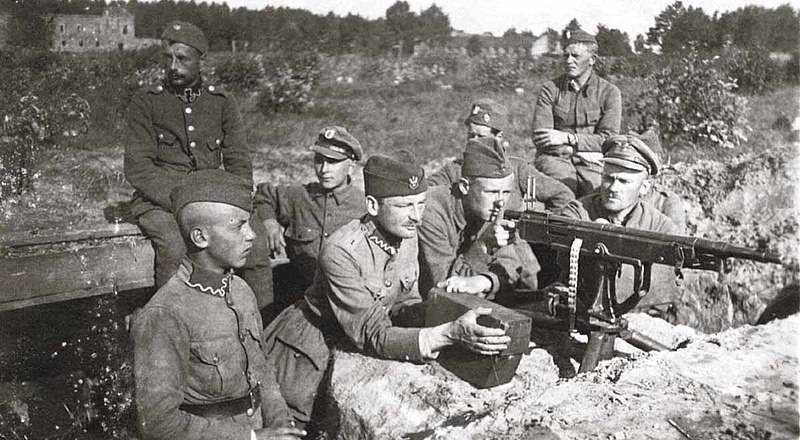
The "Miracle on the Vistula" happened 100 years ago. Pilsudski was able to defeat Tukhachevsky's armies. The Polish command, with the support of the West, was able to covertly concentrate the strike group (110 thousand people). On August 14, 1920, the Polish army launched a counteroffensive. In the course of stubborn battles on August 15-20, the armies of the Western Front were defeated and suffered heavy losses. Under the threat of encirclement and complete annihilation, Soviet troops rolled back to Belarus by 25 August.
To Warsaw
Under the influence of the July successes of the Red Army in Belarus, overly optimistic reports from the command of the Western Front led by Tukhachevsky and Commander-in-Chief Kamenev, the Soviet government got the impression that Poland was on the verge of falling. As soon as bourgeois Poland is pushed, it will collapse. And over Warsaw it will be possible to raise the red flag and form the Polish Socialist Republic. And then the communists can take up in Berlin. Revolutionary internationalists led by Trotsky dreamed of a "world revolution". Lenin supported these plans.
As a result, a strategic mistake was made. It was necessary to concentrate efforts on restoring borders historical Russia, the main forces to concentrate on the Lviv direction. Liberate Galicia from the Poles. In addition, the civil war in Russia has not yet been completed. It was necessary to defeat Wrangel's army and liberate Crimea from the White Guards, then the Far East. Stalin insisted on this. Warsaw was not a Russian city. Nobody outside of Russia (except for small groups of communists) saw the Bolsheviks as “liberators”. On the contrary, Western propaganda has created the image of the "bloody Bolsheviks", a new invasion of "Russian barbarians" into Europe. The Red Army was presented as a bunch of murderers, marauders and rapists. With the transfer of hostilities to Poland, the Soviet-Polish war lost its just character and became unnecessary for the people. It was enough to restore the western border of White Russia. And the ideas of the revolutionary Trotskyists were dangerous for Russia, leading to its destruction.
Thus, the Soviet government followed the lead of the supporters of the "world revolution". They hoped to crush Poland with one blow. Create a Soviet government there. Dzerzhinsky had already planned the creation of Polish units of the Red Army. Behind Poland lay Germany - defeated, humiliated, disarmed and plundered. Not yet calmed down after her own revolution, she was distressed by the convulsions of strikes and uprisings. For Galicia - the same Hungary. The "world revolution" seemed closer than ever.
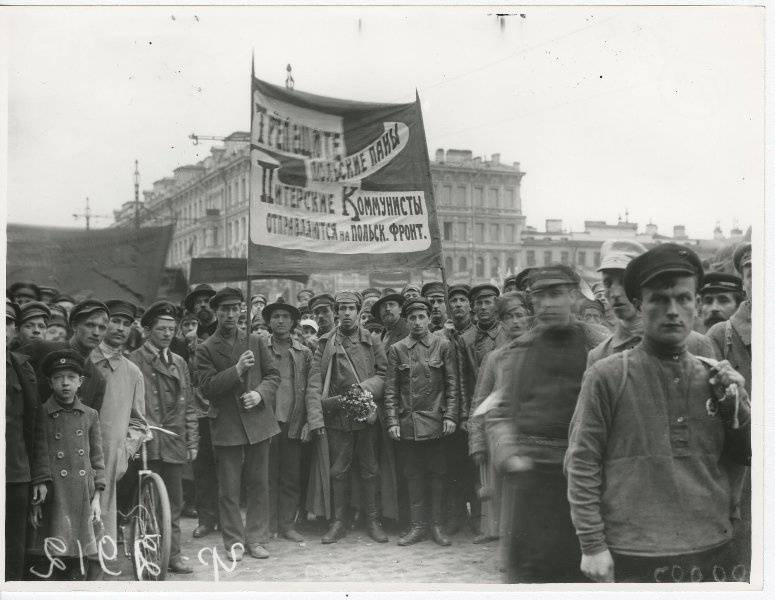
Warsaw operation
The forces of the Red Army, instead of concentrating efforts on one strategic direction, sprayed. The armies were driven to Lvov and Warsaw. At the same time, the enemy was underestimated, as was the determination of the Entente to save Poland, and their forces were overestimated. The Red Army was already exhausted and drained of blood by previous operations. It was necessary to give the divisions rest, replenish and restore them. Bring up reserves and rear services, gain a foothold on the already achieved lines. Prepare supplies, establish communications. Immediately, without a pause, after the July operation (July 4-23, 1920), the Red Army began the Warsaw operation. From the line Grodno, Slonim and Pinsk, the armies of the Western Front (about 140 thousand people) launched a new offensive.
Attempts by the previously defeated Polish troops (1st and 4th armies, about 50 thousand people) to stop the Reds did not lead to success. The Polish defense was broken through almost immediately. Having crossed the Neman and Shara, on July 25, our troops liberated Volkovysk, on July 27 - Osovets and Pruzhany, on July 29 they entered Lomza, and on July 30 - Kobrin. On August 1, 1920, the Red Army liberated Brest, then occupied Ostrov and Ostrolenka. However, in early August, enemy resistance had already increased significantly. So, the troops of the 16th army of Sollogub and the Mozyr group of Khvesin for a week could not break through the enemy's line on the river. Western Bug. These battles showed that the southern flank of the Western Front does not have sufficient forces and reserves for the rapid development of the offensive and parrying a possible enemy counterstrike.
On July 30, the Provisional Revolutionary Committee of Poland (Polrevkom) was established in Bialystok, which included Markhlevsky, Dzerzhinsky, Kon and Prukhnyak. In fact, it was the future Soviet government of Poland, which was to carry out the Sovietization of the country. However, the lack of experienced personnel and poor knowledge of Poland led to the fact that Polrevkom was unable to win over the Polish people to his side. In particular, an attempt to solve the agrarian question on the model of Soviet Russia failed. The Polish peasants wanted to get the landlord's land as their personal property, and not create state farms on it. The Polish Constituent Diet immediately knocked it out weapon from the hands of the Bolsheviks, speeding up the decision on agrarian reform. Now Polish peasants willingly joined the army to fight for their own land.
The reconciliation of the Baltics
In the same period, Moscow was able to deprive Poland of possible allies in the Baltic. Influenced by the victories of the Red Army over internal enemies and thanks to the generous promises of Moscow, the Baltic limitrophes made peace with Soviet Russia. After a 13-month war with Soviet Russia, on February 2, 1920, the Yuryev Peace Treaty was signed between the RSFSR and Estonia. Moscow recognized the independence of Estonia, renounced all rights and property that belonged to the Russian Empire. Russia transferred to Estonia a number of lands with a mixed or predominantly Russian population: the Volosts of Narva, Koze and Skaryatino, the Pechora Territory (now these are parts of the Leningrad and Pskov regions). Estonia received part of the gold reserves of the Russian Empire in the amount of 11,6 tons of gold (15 million rubles in gold), as well as movable and immovable property belonging to the Russian treasury and some advantages. That is, the whole world was in favor of Estonia. However, the Soviet government needed peace to weaken Russia's hostile encirclement.
On July 12, 1920, a peace treaty was signed between Lithuania and Soviet Russia. The Moscow Treaty ended the Soviet-Lithuanian conflict. Moscow ceded significant Western Russian territories to Lithuania, including the cities of Grodno, Shchuchin, Oshmyany, Smorgon, Braslav, Lida, Postavy, as well as the Vilna region with Vilna (the capital of the Grand Duchy of Lithuania and Russia - a medieval Russian state). The agreement guaranteed Lithuania's neutrality in the Soviet-Polish war (the Lithuanians feared Warsaw's claims to Vilno) and secured the northern flank of the Western Front, which facilitated the Red Army's offensive in the Warsaw direction. In August 1920, Soviet troops handed over Vilno to the Lithuanians, which became the capital of the Republic of Lithuania.
On August 11, 1920, a peace treaty was signed between Russia and Latvia in Riga. Moscow also made big concessions. Recognized the independence of Latvia, ceded property to the Russian Empire, including the ships of the Baltic fleet and merchant ships. The Russian lands became part of Latvia: the north-western part of the Vitebsk province and the Pskov province (including the city of Pytalovo). Moscow transferred to Riga part of the gold reserves of Tsarist Russia over 3 tons of gold (4 million rubles). So Poland lost its Latvian ally, which strengthened the right flank of the Red Army.
All to fight the "Russian barbarians"
At this time, the Polish high command was putting things in order in the defeated army, preparing reserves and new units. On the one hand, Polish propaganda showed the selfless struggle of the Polish troops "against the invasion of the Russian barbarians in Europe." The Poles were able to rouse and mobilize the entire people for the war against the "red threat". At the same time, Pilsudski was able to show the invariability of the imperial policy of Russia, to stir up Russophobic sentiments. The Catholic Church has also actively joined the information war. The hesitants were persuaded with the help of information about the Soviet Polish government in Bialystok, pogroms and requisitions of the bourgeois strata of the population, and the anti-church policy of the Bolsheviks.
On the other hand, the Polish command, using the most severe measures, brought order to the army. Military courts were introduced, barrage detachments were created. Volunteer "hunting" regiments were formed. The aristocrats created a "black legion" to fight the Red Army, and the Polish social democrats created a "red legion". Pilsudski understood that Warsaw was more important than Lvov, and withdrew some of the troops from the southwestern direction. Also, garrisons were transferred to the east from the German border. From the previously defeated and newly formed troops transferred from other sectors of the front and rear, shock groups are formed north and south of Warsaw, on the flanks of the shock group of Tukhachevsky's Western Front.
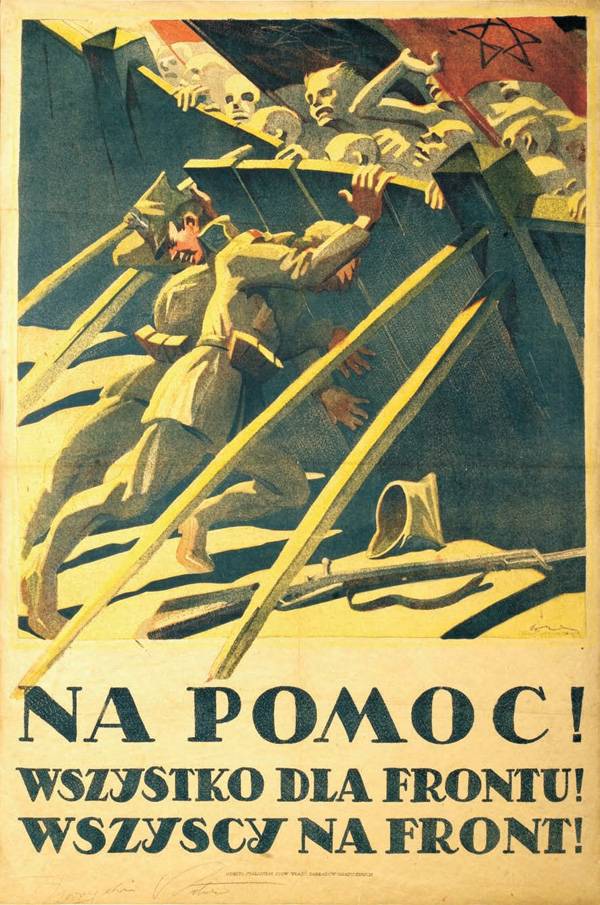
It is worth noting that the Polish armies operated near their main bases and arsenals, while the continuously advancing and fighting Soviet armies opened up further and further from their rear. Railroads, stations, bridges were destroyed during the fighting by the Poles during the retreat, so the supply of reinforcements, weapons, ammunition and food for the Red Army was very difficult. Part of the troops remained garrisons and barriers against the bypassed enemy defense centers. As a result, Tukhachevsky's strike group by the beginning of the battle for Warsaw was reduced to 50 thousand fighters.
An Anglo-French military mission led by Generals Weygand and Radcliffe arrived at the Poles. Paris sent instructor officers. In Britain and France, volunteers are being formed from persons of Polish origin. Military supplies from the West began to arrive in Poland. Britain hastily dispatched a squadron to the Baltic. Part of the squadron dropped anchors in Danzig (Gdansk), the other in Helsingfors. London was even already considering the possibility of creating a new line of defense in the rear of Poland - in Germany. Also, England and France stepped up aid to the White Army (Wrangel) in Russia in order to divert the forces and reserves of the Red Army from Poland. The USA on August 20, 1920 issued an anti-Soviet note. In a note, Secretary of State Colby said: "The United States government does not consider it possible to recognize the current rulers of Russia as a government with which it is possible to maintain the usual relations of friendly governments ..."
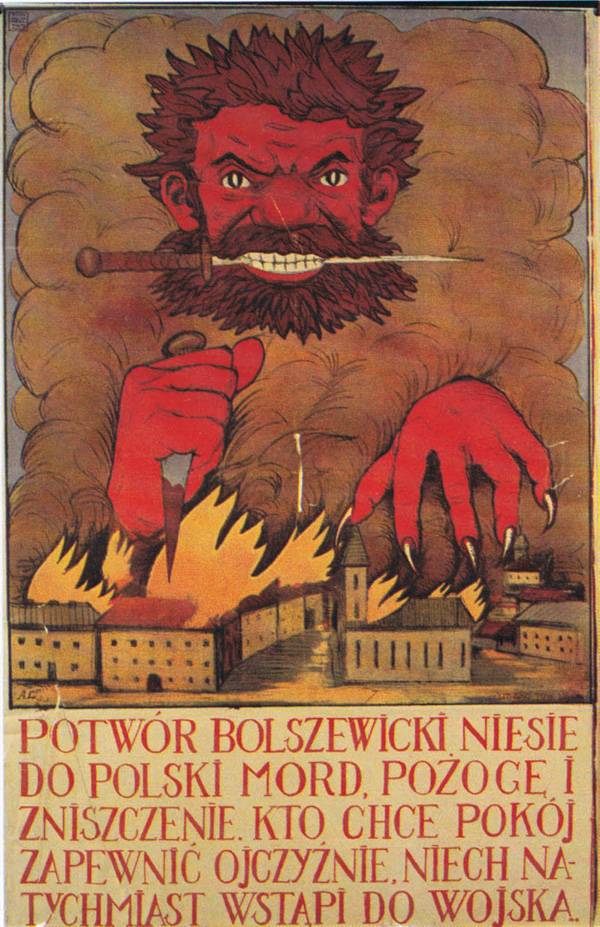
Battle plan on the Vistula
While Polish troops were holding back the enemy's onslaught on the line of the Western Bug, the Polish high command, with the participation of the French military mission, developed a new plan of military operations. On August 6, 1920, it was approved by Piłsudski. The Poles planned: 1) to pin down the enemy in the Lvov direction, to protect Lvov and the oil basin of Galicia; 2) not to allow themselves to be bypassed on the northern flank, near the German border and bleed the Red Army with defense on the Vistula line; 3) south of Warsaw in the Demblin area (Ivangorod), on the river. Vepshe, a shock group was formed to strike the flank and rear of Tukhachevsky's troops attacking the Polish capital. As a result, the Poles simultaneously strengthened the defenses of Warsaw and prepared a counteroffensive on the southern flank.
In accordance with this plan, the Polish troops were divided into three fronts: North, Middle and South. The Northern Front of General Haller included the 5th Sikorsky Army, which was supposed to defend on the river. Narew, 1st Army of Latinik - in the Warsaw area, 2nd Army of Roy - on the Vistula River. The middle front under the command of General Rydz-Smigla (from August 14 - Pilsudski) was to decide the outcome of the battle. The main striking force of the front was the 4th Army of General Skersky in the Demblin-Lublin region. To the south, the strike group of the 3rd army of Rydz-Smigly (2 infantry divisions and 2 cavalry brigades) was preparing for the offensive, then the rest of the 3rd army of Zelinsky was deployed, which provided the flank and rear of the strike group. The southern front of Ivashkevich, consisting of the 6th Army of Endrzheevsky (3 divisions) and the Ukrainian army of Petliura, covered the Lviv direction. It should be noted that many Polish commanders were former officers and generals of the Austro-Hungarian and Russian imperial armies, had experience of war with Russia and Germany. So, Latinik, Rydz-Smigly fought as part of the Austro-Hungarian army with Russia, and Skersky, Ivashkevich and Endrzheevsky - on the side of Russia.
The Poles fielded 23 divisions, of which 20 divisions operated in the Warsaw direction. Most of the cavalry was concentrated in this direction. The Polish group on the Vistula numbered about 110 thousand people, more than 100 heavy guns and 520 light ones, over 70 tanks, more than 1800 machine guns. Also during the battle on the Vistula in August 1920, the Entente sent 600 cannons through Romania, which were immediately thrown into battle. This significantly strengthened Poland's artillery park.
The concentration of the Polish strike force was a difficult and dangerous business. The Polish troops needed to break away from the enemy and occupy the designated areas in an organized manner. It was especially difficult to concentrate on the Vepsha River the divisions of the 4th Army, which were fighting on the Bug and had to leave the Russians and make a flank march almost along the front. A strong onslaught of the Red Army in this direction could upset the entire plan of the operation. However, the Poles were lucky that the strike forces of the Southwestern Front were tied up in heavy battles for Lvov and did not take part in the Warsaw operation. And the southern flank of the Western Front (the Mozyr Group and the 12th Army's right-flank division) was weak and incapable of a rapid offensive. As a result, the disruption of interaction between the Western and Southwestern Fronts led to the dispersal of our forces in different directions that are not connected with each other. This made it easier for the Poles to organize a counteroffensive.
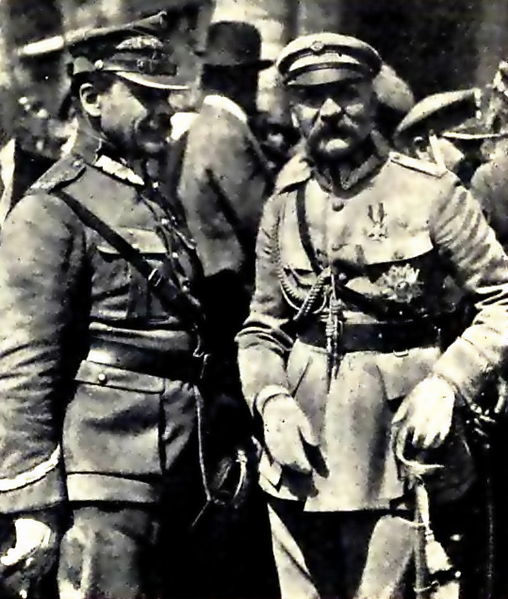
To be continued ...
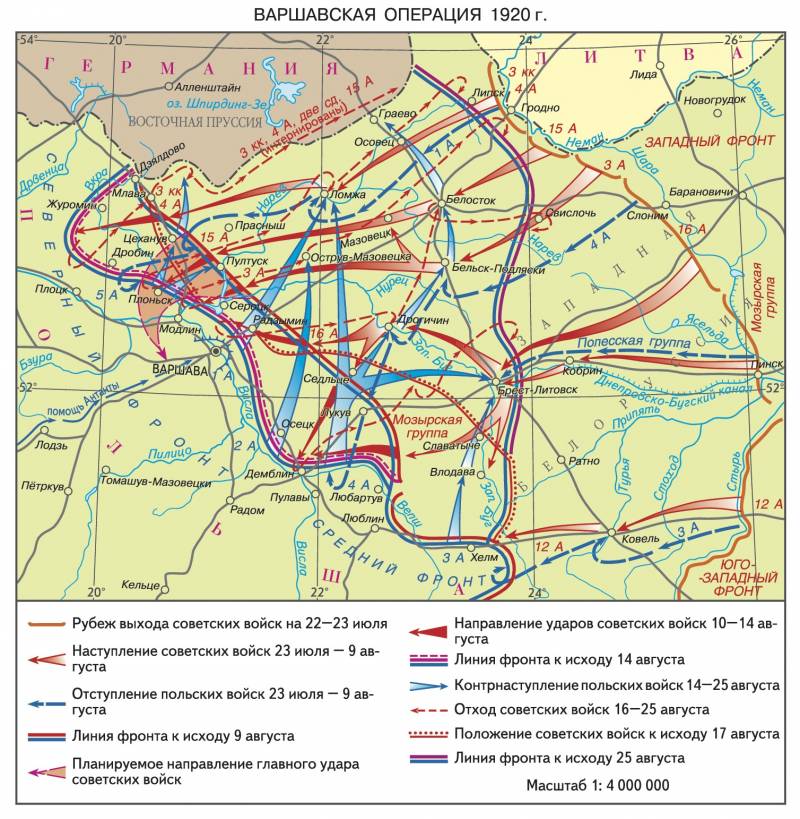
Information